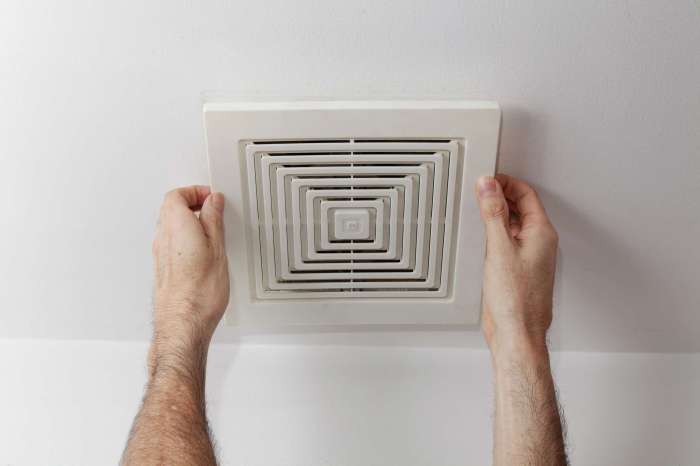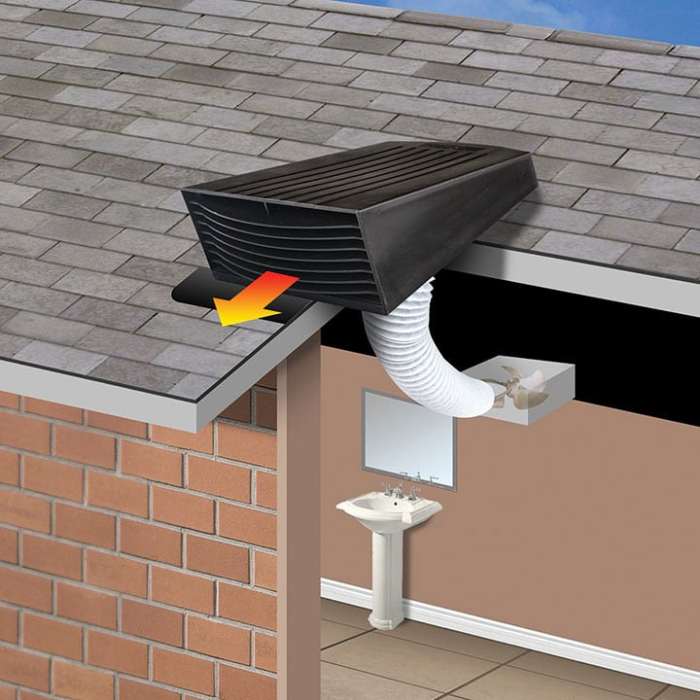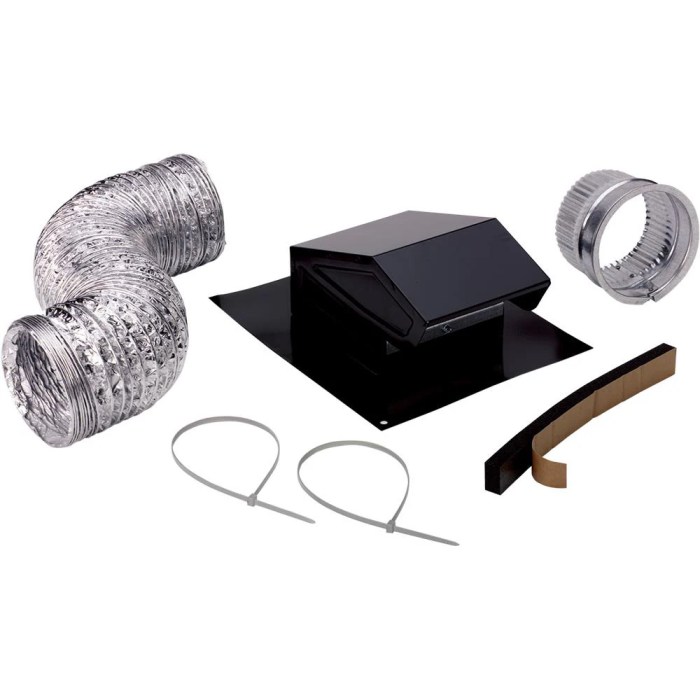Ensuring the proper weatherproofing of bathroom exhaust fan exterior vents is crucial for maintaining optimal ventilation and preventing moisture damage. This comprehensive guide will delve into the essential materials, design considerations, and weatherproofing techniques involved in safeguarding these vents from the elements.
By understanding the unique challenges posed by outdoor conditions, we can effectively protect our homes from moisture buildup, mold growth, and structural deterioration. Let’s explore the best practices for weatherproofing bathroom exhaust fan exterior vents and ensure a healthy and comfortable indoor environment.
Exterior Vent Materials
Selecting the right exterior vent material for your bathroom exhaust fan is crucial for ensuring weatherproofing and durability. Each material offers unique advantages and disadvantages.
Plastic
- Benefits: Lightweight, inexpensive, easy to install, resistant to corrosion.
- Drawbacks: Can become brittle and crack over time, especially in extreme temperatures.
Metal
- Benefits: Durable, long-lasting, resistant to wear and tear, can be painted to match exterior.
- Drawbacks: Can rust if not properly coated, more expensive than plastic.
Wood
- Benefits: Aesthetically pleasing, can be stained or painted to complement exterior.
- Drawbacks: Requires regular maintenance, can rot or warp if not properly treated, susceptible to insect damage.
For outdoor use, weather-resistant materials like galvanized steel or aluminum are recommended. These materials can withstand harsh weather conditions and provide long-term durability.
Vent Design and Installation
Designing and installing exterior vents for bathroom exhaust fans requires careful consideration to ensure proper ventilation and weatherproofing. The vent’s design, size, and placement play crucial roles in achieving these goals.
Types of Vent Designs
There are several types of exterior vent designs available, each with its advantages and disadvantages:
- Louvered Vents: Consists of horizontal or vertical slats that allow airflow while preventing rain or debris from entering.
- Baffled Vents: Features a series of baffles or louvers that redirect airflow upwards, minimizing rain infiltration.
- Hooded Vents: Incorporates a hood or cover over the vent opening, providing additional protection from rain and snow.
Vent Size and Placement
Selecting the appropriate vent size is essential for optimal airflow. The vent should be sized to match the exhaust fan’s CFM (cubic feet per minute) rating. Proper placement ensures the vent is positioned to effectively exhaust moisture and odors without creating drafts or allowing rain or snow to enter the bathroom.
Typically, the vent should be installed as high as possible on the exterior wall, above any potential obstacles that may block airflow. Avoid placing the vent near windows or doors, as this can create drafts.
Weatherproofing Techniques
Ensuring proper weatherproofing is essential to prevent water damage and maintain the integrity of your bathroom exhaust fan exterior vents. Several effective methods can be employed to create a tight seal and protect the vent from the elements.
Sealants
Sealants are a popular choice for weatherproofing exterior vents. They come in various forms, including silicone, polyurethane, and acrylic. Choose a sealant specifically designed for outdoor use and apply it liberally around the perimeter of the vent, where it meets the surrounding structure.
Ensure the sealant is applied evenly and forms a continuous bead without any gaps.
Gaskets
Gaskets are pre-formed rubber or foam strips that can be placed between the vent and the structure to create a watertight seal. They are available in different sizes and shapes to fit various vent models. Clean the surfaces thoroughly before applying the gasket and press it firmly into place, ensuring a snug fit.
Weatherstripping
Weatherstripping is another effective option for weatherproofing exterior vents. It is a self-adhesive foam or rubber strip that can be applied to the edges of the vent opening. When the vent is closed, the weatherstripping compresses to form a seal against the surrounding structure, preventing water penetration.
Maintenance and Troubleshooting
Regular maintenance of exterior vents is crucial to ensure proper functionality and prevent weather damage. It involves cleaning, inspecting, and replacing vents as needed.
Cleaning Exterior Vents
Clogged vents can restrict airflow and reduce efficiency. Regularly remove debris, such as leaves, dust, and insects, using a soft brush or vacuum cleaner. For stubborn grime, use a mild cleaning solution and rinse thoroughly.
Closure
In conclusion, weatherproofing bathroom exhaust fan exterior vents is a critical aspect of home maintenance that ensures proper ventilation and prevents moisture-related issues. By selecting durable materials, designing and installing vents correctly, and implementing effective weatherproofing techniques, we can safeguard our homes from the elements and maintain a healthy indoor environment.
Remember to regularly maintain and troubleshoot your vents to ensure optimal performance and longevity.



